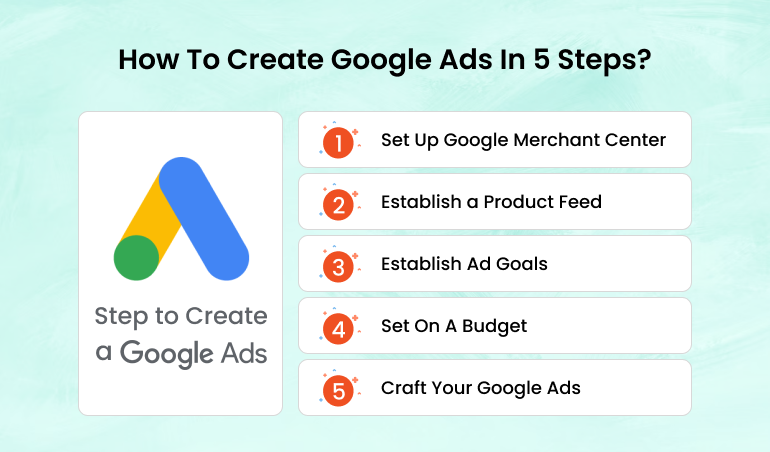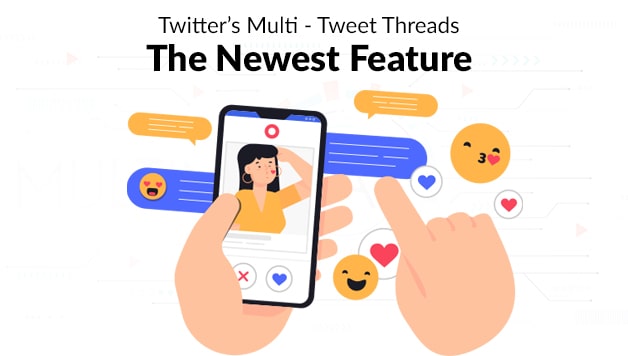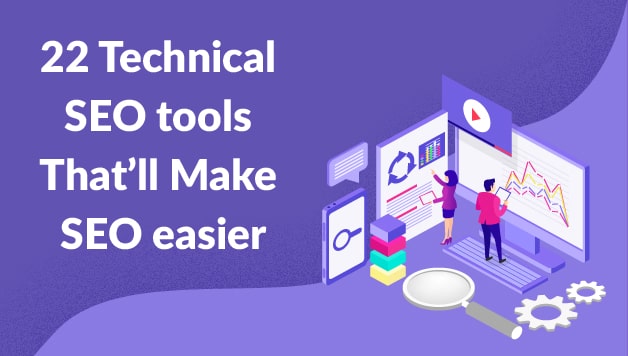Summary
Learning how to run Google Ads for online advertising is one of the best strategies to expand your clientele and boost sales. Before you can begin, though, you must understand how to utilize Google AdWords correctly to minimize errors and optimize your return on your investment from the money you spend on advertising. This blog covers step by step guide on how to run google ads campaign for your business along with important tips.
Table of Content
- Google Ads Guide: Introduction
- What is Google Ads Campaign?
- How Google Ads Work in 2024?
- How Much Google Ads Cost?
- How To Run Google Ads In 5 Steps?
- Step 1: Set Up Google Merchant Center
- Step 2: Establish a Product Feed
- Step 3: Establish Ad Goals
- Step 4: Set On A Budget
- Step 5: Craft Your Google Ads
- Tips to Create & Run Google Ads Efficiently
- Conclusion
- FAQs
Google Ads Guide: Introduction
With 8.5 billion searches handled daily, Google is without a doubt the most powerful online advertising platform. Our step by step google Ads guide 2024 will help you boost your customer footfall organically. There are plenty of chances to advertise your small company because so many people are swarming to put their inquiries into that empty, waiting box, asking everything from where the closest Italian restaurant is to how to decorate their bedroom.
Our Guide to run Google Ads may boost your SEO strategy and help you reach new audiences right away if you’ve only recently finished building your website. Like any marketing strategy, however, there are a few nuances to be learned if you want to ensure the success of your campaign.
What is Google Ads Campaign?
Google owns and runs the pay-per-click advertising network known as Google Ads. In addition, Google Ads is the world’s biggest and most popular online advertising network, helping millions of companies meet their revenue, marketing, and client acquisition objectives. When using it, the Google Ads Tutorial advertisers have the option to target people on several networks.
Search Ads
Text advertising targeted keywords are words and phrases that people search for on Google—and are produced by advertisers on the Search Network. They may now show up in search results at the precise moment when their consumers are most likely to interact or make a purchase. Even though search advertisements are only one kind of PPC advertising, this phrase is frequently used to describe them.
Display Ads
On websites that are a part of the Display Network, marketers have the opportunity to place graphic banner-style ads. Roughly 90% of all internet users worldwide are reached by the Google Display Network by offering a sizable potential audience. In the end, combining Search and Display yields the best results.
Shopping Ads
By linking a comprehensive product feed to your account, Google will show you goods that correlate with searches on Search on Google, the Google Shopping tab, and more locations within the Google Shopping network. Watchers have the option to buy straight from the advertisement or by clicking on the product page.
YouTube Advertisements
Since Google owns YouTube, you may also build display or video advertising using Google advertising, which will show up on YouTube videos and search results. Visit our comprehensive guide to YouTube advertising to learn more.
Every kind of advertisement has advantages of its own and may support various goals. Additionally, there are several campaign kinds, locations, formats, and other things inside these networks. You may even promote simultaneously across different networks with certain sorts of campaigns.
How Google Ads Work in 2024?
There are several methods to market your goods, services, and content with Google AdWords. Google Ads is essentially a pay-per-click (PPC) advertising network that lets you bid on keywords and only pay if and when your ad is clicked or viewed. In addition, Google Ads provide following additional features and specifications:
- Campaign Types: Search, display, commerce, video, app, smart, and Performance Max ad campaigns are all supported by Google Ads. The last two choices use machine learning to improve your ad effectiveness and targeting automatically.
- Placements: Your advertisements may show up on YouTube, Gmail, affiliate websites (Google Display Network), or in several locations on a Google search result page (such as the top of the results or the Google Shopping tab).
- Targeting Options: Keywords, demographics, interests, and/or placement can all be used to target ads. As an alternative, you may use remarketing, in-market audiences, or similar audience campaigns to target your current customers or individuals who are similar to them.
- Bidding Strategy: Google Ads uses a bidding mechanism where the highest bidder gets the greatest placement. This is the basis of the bidding strategy.
- Ranking Factors: In addition to your bid amount, Google AdWords considers the competitiveness of an auction, the quality of your advertisements (also known as your “quality score”), and the context of a user’s search (such as location, time, etc.) when determining when to display your ads. Google refers to this combination of characteristics as Ad Rank.
Overwhelmed by the complexities of Google Ads?
Our Google Ads Management Services help you run smart campaigns and drive real business success.
Let’s take the Stress out of Google Ads!
How Much Google Ads Cost?
Now let’s discuss budgeting, which is the next aspect of Google Ads costs. This isn’t always the case; more frequently than not, it stems from a misconception about how Google AdWords budgeting operates.
- Budget: The amount of money you have available for Google Ads
- Bid: The highest amount you are prepared to spend on an ad click is your bid.
- Spend: The sum that Google deducts from your allotted funds when one of your ads enters an auction.
- Cost: The real money you have to spend for someone to click on your advertisement.
How To Run Google Ads In 5 Steps?
What are the procedures for establishing Google Shopping campaigns, and how are shopping advertisements made? Let’s go over the five crucial stages in this part to help you start successful and, most importantly, lucrative Google Shopping advertising from scratch. This is how you run Google ads that get you buyers from visitors.

Step 1: Set Up Google Merchant Center
Setting up a Merchant Center account is the first step in establishing Google Shopping advertising, and as we’ve already mentioned, this is a prerequisite. The primary location for merchants to contribute information about products in the form of a feed is Google Merchant Center. Accurately enter your company details, including name, nation, and time zone, by following the instructions for creating a Merchant Center account. Correcting the timezone is crucial since it affects when your feed retrieves data. After the account is successfully created, you must confirm that you own your website and link it to the Merchant Center account.
This may be done immediately in the Merchant Center by submitting an HTML file to the website or by adding a tag to the page using Google Analytics. By selecting “Shipping and returns” under “Settings,” you can also configure account-level shipment and returns in Google Merchant Center. If postage is the same for every product on sale, use account-level shipping and make sure the shipping charges match those on your website. As an alternative, you may use the delivery [shipping] property in your feed to specify the delivery cost and duration for each product, which is something we will go over.
Connect Google Ads to the Merchant Center Account
While all of the crucial data that underpins Google Shopping is stored in the Merchant Center, campaigns are produced and managed inside Google Ads. Thus, connecting your Google Ads and Merchant Center accounts is the second step in setting up Google Shopping Ads. Click “Settings” and then “Linked accounts” in your account with Google Merchant Center to accomplish this. You may choose the Google Ads account you want to link by selecting it from the list of accounts that appear. Once the link request has been approved in Google Ads under “Tools and settings” > “Linked accounts,” the Merchant Center will open and may be handled from this location.
Step 2: Establish a Product Feed
To have items appear on Google, a primary product feed must be produced and submitted to the Merchant Center. Although it is feasible, it is not advised to manually add items to the Merchant Center. This might only be applicable if the merchant is selling a small selection of goods. When there are more than three items, this method of setting up and managing goods in the Merchant Center becomes quite inefficient.
Requirements for Google Shopping Product Feeds
Product attributes make up the feed; certain qualities must be met for a product to be accepted for Google Shopping. Every product has to have the following qualities:
- ID (id)
- Title [headline]
- Characteristic [description][link]
- Picture URL (picture_link)
- Accessibility [accessibility]
- Date of availability [date_of_availability]
- Cost [cost]
- MPN [mpn] or GTIN [gtin]
You should also take into account the extra features listed below, keeping in mind that your product feed’s chances of success on Google Shopping will increase with its level of relevance and accuracy. Google product categories, extra picture links, discounted pricing, condition, size, color, and so on are a few examples.
Utilize Google Merchant Center to Upload Your Primary Feed
Click the Add icon in the Merchant Center’s “Feeds” section to input feed details, such as language, target countries, and the feed destination—Google Shopping should be chosen.
A Third-Party Feed Management Tool Would Be Useful
A third-party feed management solution helps expedite the process of configuring a product feed and submitting it to Google Merchant Center. In addition to automating product data feeds, merchants and advertisers may optimize them for increased earnings with the help of the DataFeedWatch Google Shopping feed management system.
Step 3: Establish Ad Goals
Before launching any kind of strategy, a Digital Marketing agency will establish objectives for your business. It is the same situation when you run Google Ads campaign. If you plan to use PPC advertising, you must set realistic goals for the advertisements. With your campaign, what goals you might want to accomplish? For example, what is your desired outcome in terms of leads, conversions, and click across rate (CTR)? You may create and accomplish all of these different kinds of goals with a PPC campaign. Setting campaign goals is the first step to becoming an expert in Google AdWords.
Determine Who Your Targeted Market Is?
It’s important to identify who is intended to view your ads. You must first identify your target demographic, as your ads are designed to appeal to them. Consider your ideal client when determining your target audience. A lot of companies build personas, creating several kinds of individuals within their target market. They build ads that are appealing to these kinds of people using these profiles.
What does your ideal customer do, in your opinion? What time do they log on to the internet? What do they look for, and with what tools do they search? When determining the target demographic for your PPC management, these are crucial questions to ask yourself. You may design more effective Google Ads ads for your target audience once you have identified who they are.
Perform Research On Keywords
Keywords drive PPC advertisements. Your advertising appears in the search engine results when these terms are typed in. The proper keywords must be chosen for your campaign while using Google Ads. You must perform keyword research for this. To assist you in selecting the best keywords for your initiative, a variety of research tools are available. You should concentrate on long-tail keywords while you search for other keywords.
These are sentences of three words or more. Because long-tail keywords are more focused and likely to attract quality leads who are looking for the most appropriate outcomes, they increase campaign traffic. By researching long-tail keywords, you may draw in leads that are more suitable and inclined to buy. You’ll increase revenues for your company by doing this.
Step 4: Set On A Budget
You must choose your budget when you build and run Google Ads campaign. Your campaign’s budget plays a crucial role in determining the duration of the campaign and the quantity of leads that may be generated. The fact that you may run a campaign without a set budget is among the top Google Ads recommendations.
As you determine your budget, you should have the highest possible offer in mind. The most you are ready to pay for each click on your advertisement is your maximum bid. You should take your maximum bid into account when determining your budget. Think about how many clicks you hope to receive and how much it will cost you.
Step 5: Craft Your Google Ads
Effective advertising is a need when using Google Ads. You must produce advertisements that will entice viewers to click on them. You should incorporate the right keywords into your ad content first. This guarantees to your viewers that your advertisement is pertinent to their quest. The next thing you should do is write a captivating headline.
To entice readers to click on your advertisements, you need to craft a compelling title. Finally, you must instruct your audience on what to do next. To encourage them to take action and become a paying client, include a call to action (CTA) in your advertisement. To make a better advertisement for your campaign, use these components. Making compelling advertising that draws in the interest of your leads will increase the number of clicks on your advertisements.
Your ad is ready to go live as long as it doesn’t receive a Google Ads rejection. If you would want assistance with automated targeting, you may also employ Performance Max advertisements (PMax). View sample PMax advertisements to get an idea of how they could appear in real life.
Tips to Create & Run Google Ads Efficiently
In this Google Ads guide, we bring you some additional tips and checks that you can ensure for easy success of your campaigns. You may advertise and promote your goods and services when people search for appropriate phrases using Google Ads, formerly known as Google Adwords. You can increase sales and connect with a greater number of potential clients if you have a solid plan in place.
Upgrading Your Landing Page
You are sending your leads to a specific website every time they click on the link in your Google Ads PPC campaign. Make sure everything is current, whether it’s your home page or a price page. Pointing your viewers to out-of-date sites might turn them away as leads. This implies that to upgrade your website, you could have to pay for web design services or do it yourself with the aid of numerous design tools. It’s also critical to remember that you must point your viewers to the appropriate landing page.
If you force visitors to explore your website to discover the pertinent page, you will lose leads. Establish a landing page that is current and relevant for your Google AdWords ad to increase campaign performance.
Remarketing To Increase Conversions
Leads from your Google Ads campaigns will almost certainly not convert immediately. They will visit your business after clicking on your advertisement, but they won’t buy anything. This is not out of the ordinary since many people deliberate about purchases for longer periods.
You may utilize remarketed advertising to keep these leads excited about your brand and make sure you don’t lose them. You may set up a retargeting campaign to display them ads for the goods or services they browsed when they clicked on your ads. This maintains their attention on your brand. Remarketing can help you get as many potential customers and sales for your Google Ads campaign as feasible.
Conclusion
To sum up, we can say that if you wish to run Google Ads efficiently, you must improve your Google Ads optimization to uplift your ad rank and enhance sales and return on investment by focusing on the appropriate metrics, relevant keywords (the same terms that your ideal client is searching for), optimized landing pages, ad relevancy, and different bidding techniques. Above all, you may take advantage of all those advantages without going over your budget.
This advertising works well for bringing in fresh, reliable leads for your company. Learning Google AdWords will enable you to plan a strategy that efficiently generates quality leads that become customers. If you feel intimate, fear not as we are here. Being the top-ranked Google Ads agency, we ensure your Google Ads Campaign success in the shortest possible time at affordable rates.
FAQs
The first step is setting up a Google Ads account and defining your campaign goals. You’ll need to determine whether your focus is on brand awareness, lead generation, or sales.
Use Google’s targeting features, such as demographic filters, keyword targeting, and audience segments to reach the right people. You can also leverage remarketing to re-engage previous visitors.
Start by determining your daily budget, then set bids for each keyword or ad group based on cost-per-click (CPC). Google Ads offers a Smart Bidding feature that adjusts your bids automatically for the best results.
A strong ad should include a compelling headline, clear description, and a call-to-action (CTA). Incorporating relevant keywords and ad extensions (like site links or call buttons) can also boost effectiveness.
Regularly analyze performance data, conduct A/B testing on ad copy and landing pages, refine your keywords, and adjust your bids to improve ROI. Consistent monitoring and adjustments lead to better results.



Comments